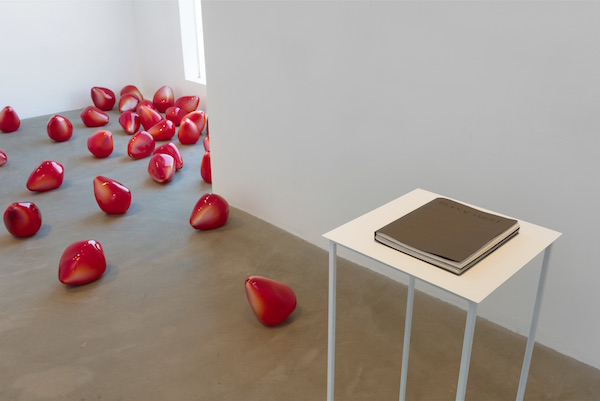I: Conjecture
Re:enactment began as physical demonstration of Kepler’s Conjecture, specifically his well-known example of how pomegranate seeds achieve their rhombic facets:
The cause of the shape of the pomegranate seed is thus in the soul of the plant, which is responsible for the growth of the fruit. But this cannot be the real cause of the shape, since it does not endow the fruit with its shape out of a formal property, but rather assisted by material necessity. For at first, while the seeds are still small, they are round, and they remain that way for as long as there is sufficient room within the rind. Later as the rind stiffens and the seeds continue to grow, they become crowded and are pressed together just like peas within their narrow pods. Peas, however, have no room to yield, for they are placed all in a row within the long pod, and thus they are compressed only on two sides. The round seeds of a pomegranate, on the other hand, are born into the larger space of the fruit, for that at first, each one can easily work itself between the three seeds of the adjacent layer, aided by its own roundness, and wherever pressed, pushing its sap into the empty spaces. And if someone were to take many round little beads of equal size and of the same soft material, put them in a round vessel, and begin to compress it from all sides with bronze rings, many of the beads would be squeezed into a rhombic shape, especially if by carefully shaking the container you first allowed them to settle into narrower spaces by their own free rotation.
—Johannes Kepler,
The Six-Cornered Snowflake, 1611
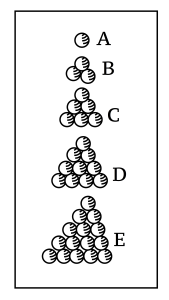
In Kepler’s text, pomegranates are deemed nature’s perfect example of sphere-packing. The form of each seed is a diagram of the conditions of its growth. I was able to reverse-engineer this process and I developed a method to achieve a parallel structural outcome at a larger scale: I cast resin into flexible bladders and packed them into a container; spheres of reactive liquid pushed against their neighbors until tension created parallel planes; the material cured and captured each individual state of compression. As planned, this methodical homogeneity yielded a collection of utterly unique forms. In their eccentricities, these resin seeds explored a wide range of rhombic identities.
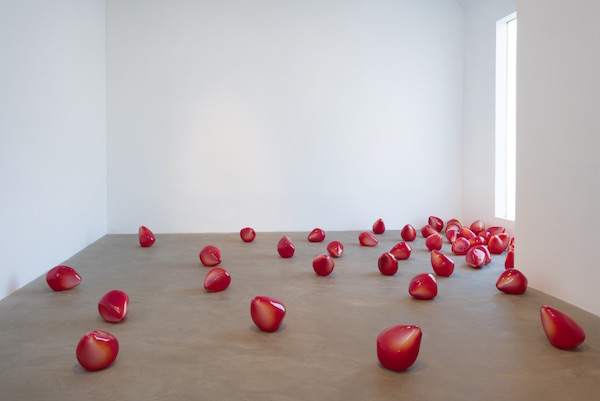
II: Character
As I worked on the project, it was difficult to avoid the abundant cultural associations with pomegranate seeds. As a matter of course, I began studying their allegorical dimensions. The oldest reference I found was in the Homeric Hymn to Demeter, written in 7th century BCE.
So he spoke. And high-minded Persephone rejoiced.
Swiftly she set out, with joy. But Hadês gave her,
stealthily, six seeds of the pomegranate to eat,
peering around him. He did not want her to stay for
all time over there, at the side of her honorable mother.
The story goes that one day, a nameless virgin was abducted by Hades, the god of the underworld. There she was crowned the queen of the dead and given the name Persephone. Persephone’s mother, Demeter, the goddess of growth and cultivation, was desperate for her daughter’s return. She neglected her work to search for her beloved, and the earth, without her care, turned to dust. Death, famine, and drought threatened existence, and the other gods intervened to free Persephone. Yet while imprisoned, Persephone had been tempted by the beauty of the pomegranate and had eaten six of its siren seeds. Those who eat the fruit of the underworld are bound to remain there. Ultimately, Hades took pity on the living and agreed that she only had to stay with him underground for six months of every year, one for each seed she had eaten.
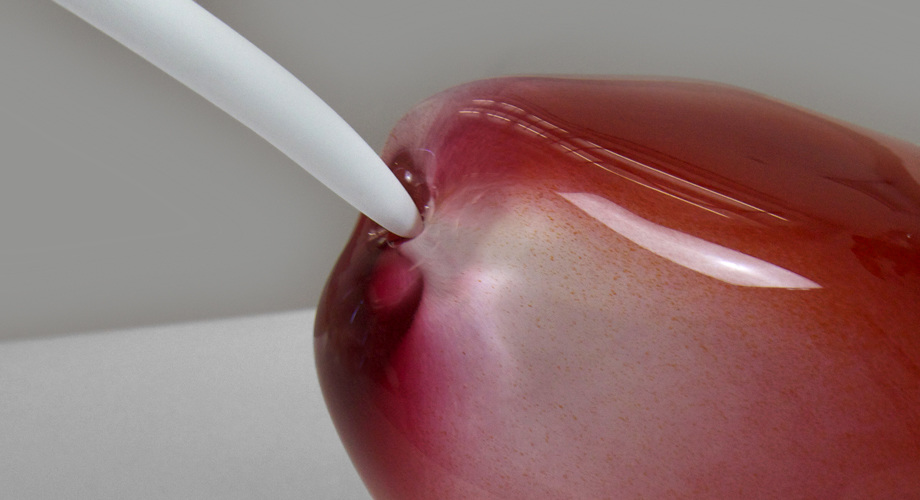
The Hymn is primarily read as an origin story of the seasons. It is winter while Persephone rules the underworld and her return to her mother signals the arrival of spring. This account of the seasons was reenacted annually as part of the Eleusinian Mysteries, the most significant feminine rites of ancient Greece. Later, the myth was reintroduced as the archetypal narrative of identity formation in the field of psychoanalysis. It exemplifies the shift from helplessness to empowerment. At the beginning of the story, the abducted protagonist does not have an identity of her own, she doesn’t even have a name. But when she is ripped away from her mother, the process of individuation begins. In her forced confinement, Persephone’s identity crystallizes – she becomes powerful within her sphere, a queen influencing her subjects.
“It is immediately clear to the psychologist what cathartic and at the same time rejuvenating effects must flow from the Demeter cult into the feminine psyche, and what a lack of psychic hygiene characterizes our culture, which no longer knows the kind of wholesome experience afforded by Eleusinian emotions. “
—Carl Gustav Jung,
The Science of Mythology, 1941
I decided to construct a contemporary reenactment of the myth to restore these Eleusinian emotions. I could not envision how my version of the story would go, but I knew that the seeds would be at the center and they would need to be emotionally and visually irresistible in order to drive the narrative forward. I adapted my process for a more precious and volatile material, a material that I knew very little about.
III: Copyright
The revised process was a performance of molten glass, inflated with breath and egos. It was the first time I had worked with fabricators, and while I directed the process, I was aware that each participant left an inevitable impression on the geometry. The human hand, in this case, became the machine of variability. And just as I marveled at the collective manufacture of my idea, I was suddenly confronted with the dilemma of authorship.
In contemporary art, the question of whether authorship can be uncorseted from fabrication is often taken for granted, and it would have been in my case as well, if it were not brought to a point of personal friction a few months later. It came to my attention that one of the fabricators who assisted on my project was making unauthorized copies of my pomegranate seeds and was selling them under his name. I was assured by his employers that it was likely a mistake, that he was naive and would sheepishly apologize when he realized his error. Instead, he was adamant that he should be able to continue making his copies. My brain was suddenly riddled with Solomonic questions regarding identity, authorship, and ownership. Was the integrity of my work undermined by false copies? Or were his copies, as he claimed, “like paperweight[s] in a Conceptual Art setting,” a non-threat, in no competition, “worlds apart.”
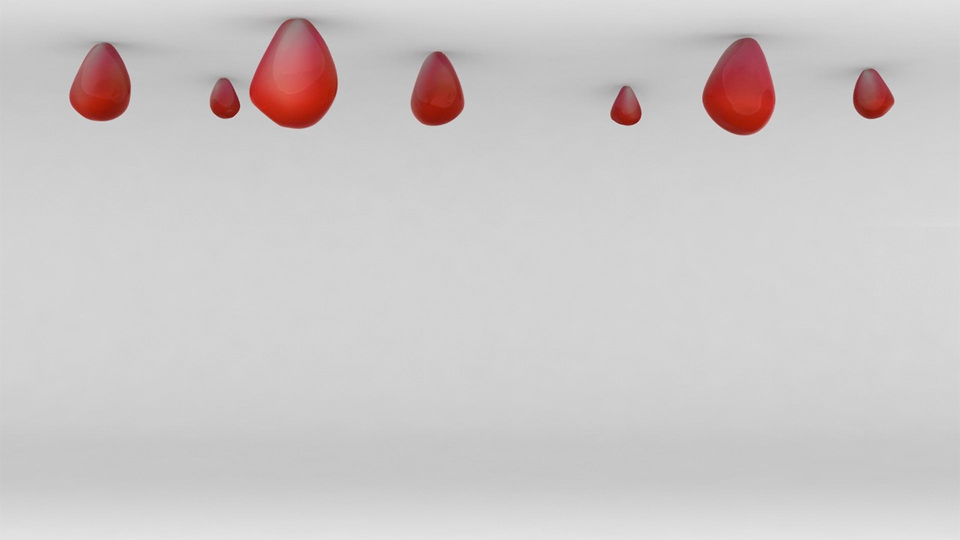
To be sure, pomegranates are a timeless, recurring trope in art and design. But in this case, not only the forms, but the method had also been abducted. Regardless of the myriad questions that arose, the bottom line, so to speak, was that I had his signature on a contractual agreement stating, “materials and proprietary information, tangible and intangible, pertaining to the manufacture, sales or business of the work produced at [the Studio], are not to be removed from the premises. Employees may not reproduce the work of [the Studio] outside of [the Studio].” Every time I notified a site or store about the infringement, the seller would immediately remove the unauthorized copies from their inventory. But after a momentary sigh of relief another copy would almost instantaneously pop up for sale somewhere else.
I began to joke that I was playing intellectual property whack-a-mole, but in truth, I was obsessed with reclaiming my work. For the first time, I had released my grip on the production of a piece and it felt as if I might lose it completely. In my deepest state of anxiety I had a sudden epiphany: I was so absorbed in the search for my abducted designs that I had neglected my creative practice, just as Demeter had neglected the cultivation of the earth as she searched for her daughter. In fact, I realized that almost line for line, my dilemma paralleled the myth I had wanted to recreate. Perhaps the seeds were destined to exist like Persephone, divided between two realms. Suddenly, my foe’s insistence that “yours is Conceptual Art and mine is Craft, each of our motivations and contexts being entirely different,” echoed with strange humor. Though I had planned to invent some fictional and resonant version of the story, it had played itself out in real life; I had been searching for a narrative and it slapped me in the face.
My project could not remain the immaculate, untouched sphere of the initial idea; its identity was forced to shift. And while, at first, I resisted the new shape of the work, I was astounded to find that the emerging facets were infinitely more compelling. The whole debacle now appeared to me as a narrative application of the principles of formation described in Kepler’s Conjecture. Just as a collection of seeds shape one another, our desires and actions push against those we encounter, and even when painful, this tension engenders forms of greater complexity than could possibly be forged in isolation.
